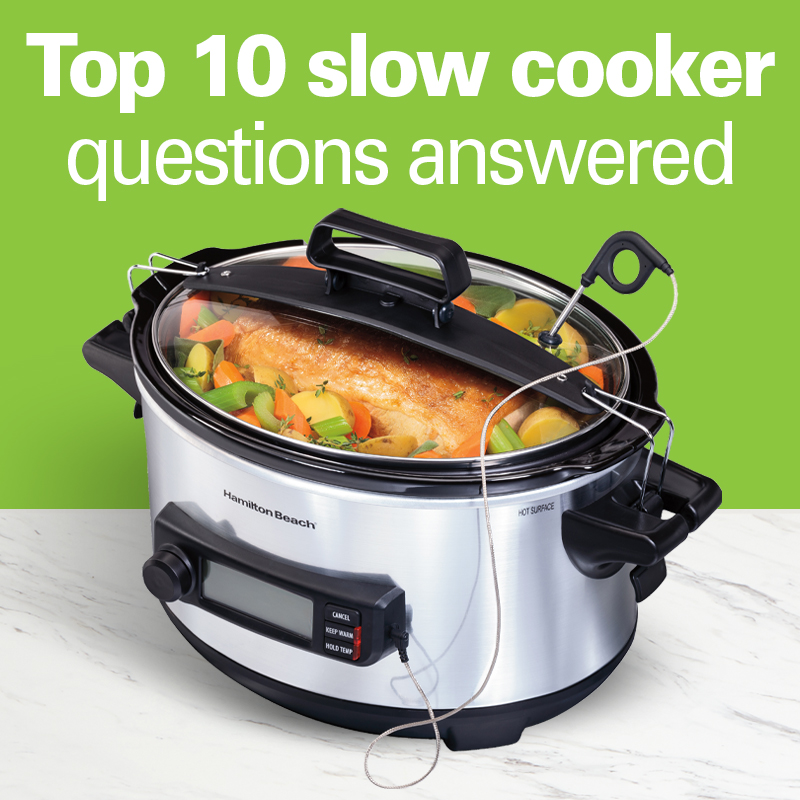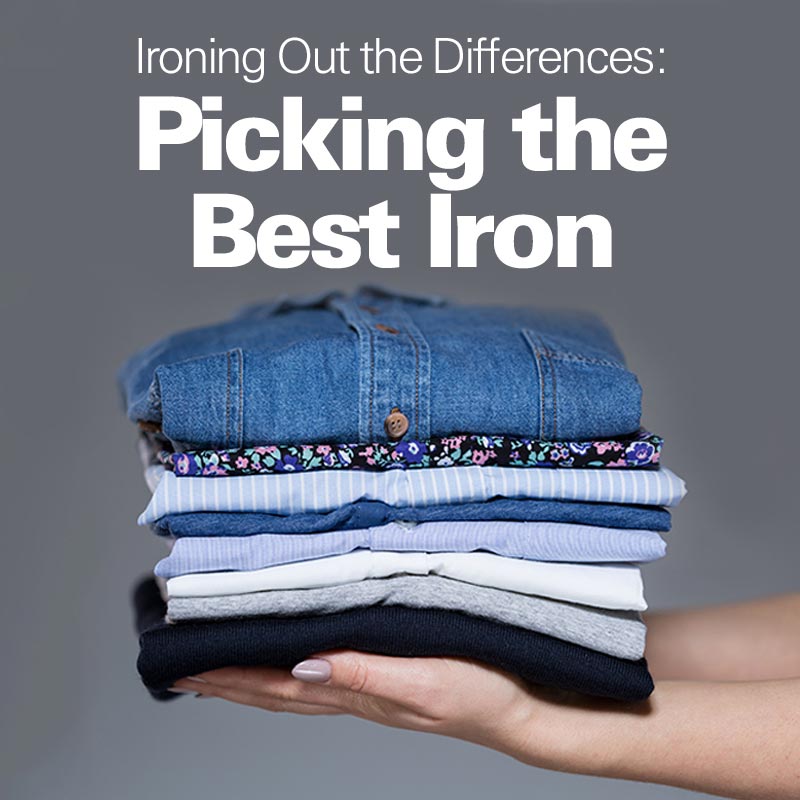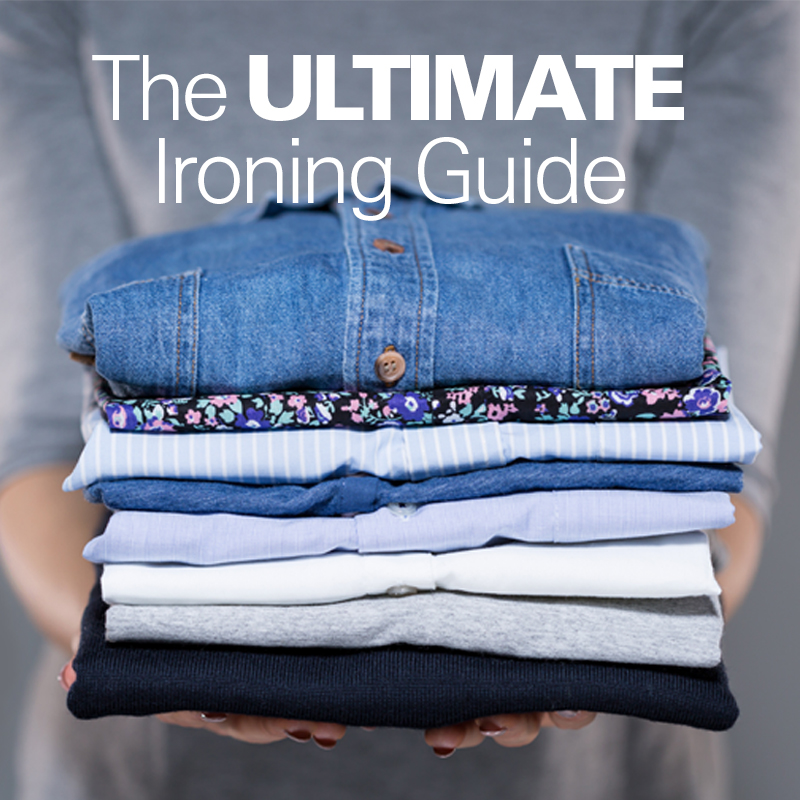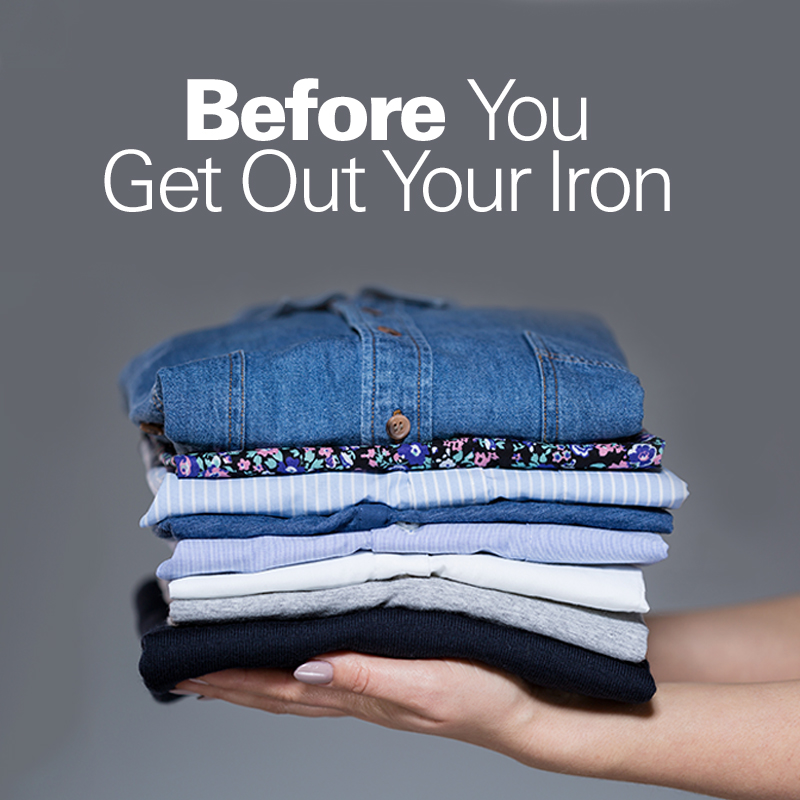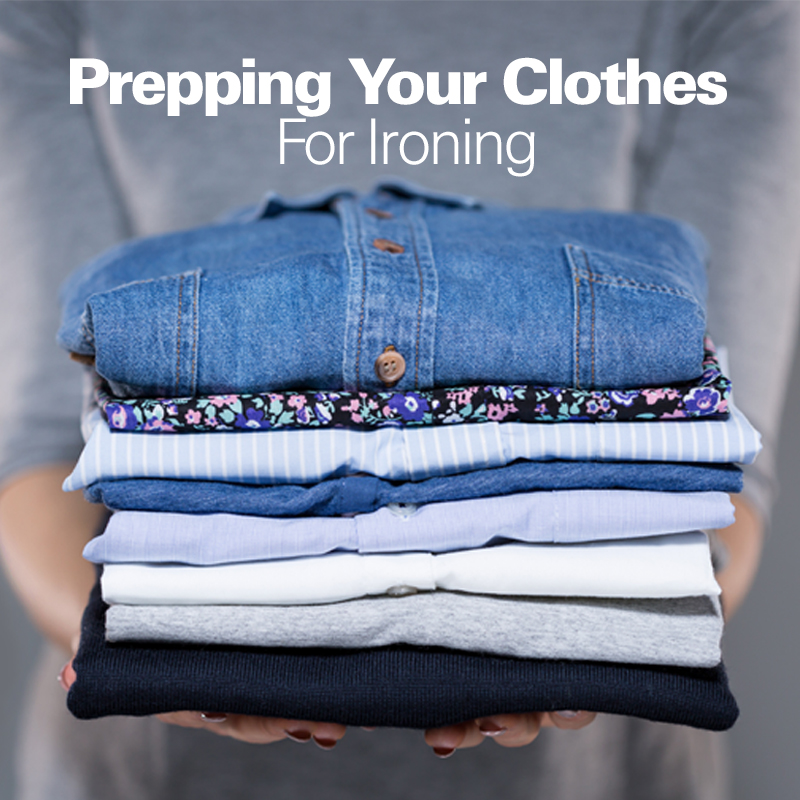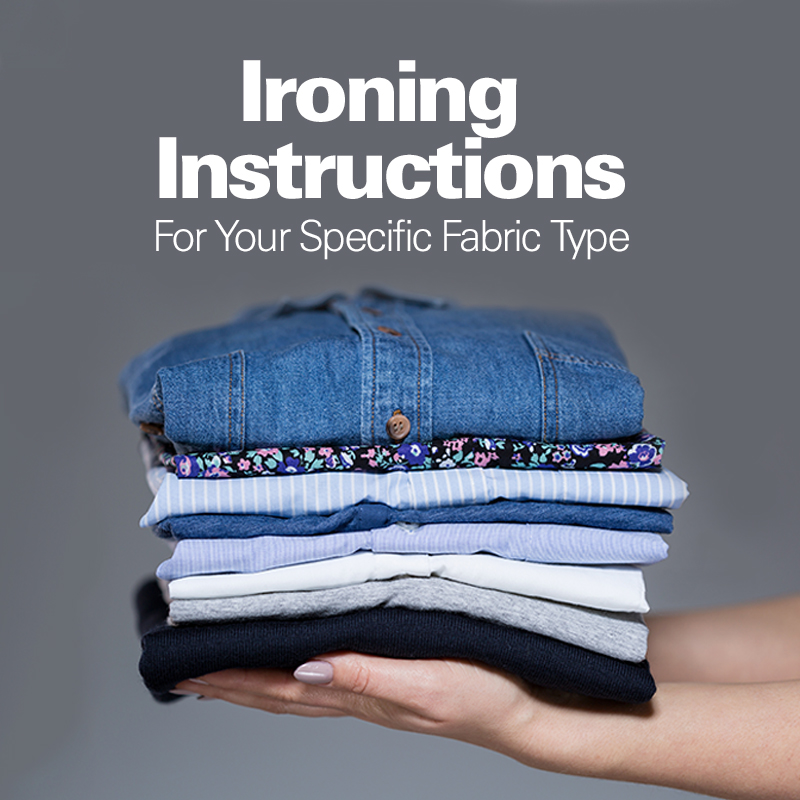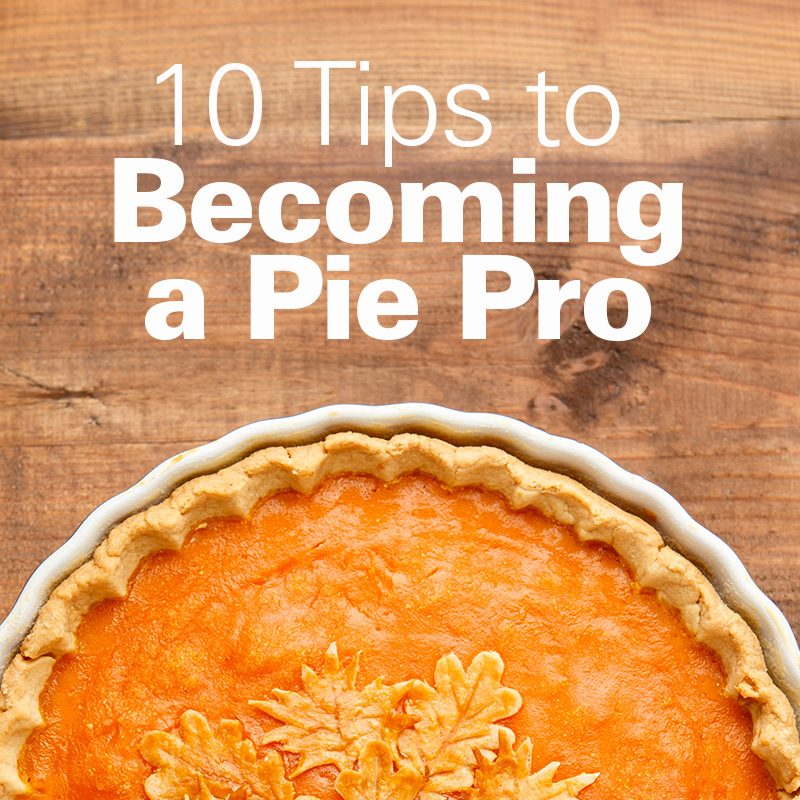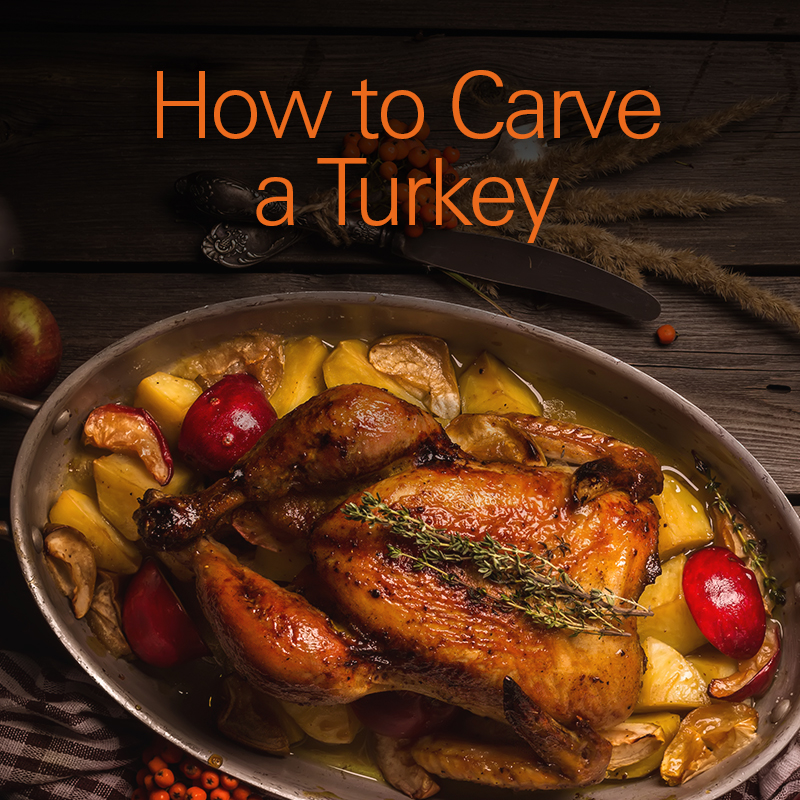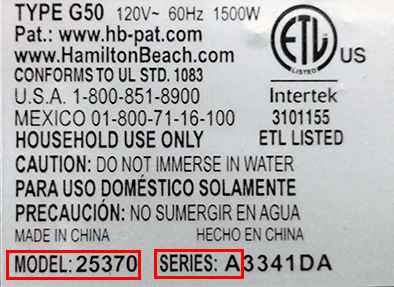Slow cookers are a staple small kitchen appliance, and while they seem straightforward, they can stir up quite a few questions. Since a lot of the design, engineering and testing of our slow cookers is done right here at Hamilton Beach headquarters, we got together with our experts in the Test Kitchen and engineering labs to get the best answers to your toughest questions. If you’ve ever asked “How does a slow cooker work?” or “Is it safe to leave a slow cooker on?”, we’ve got you covered.
1. How does a slow cooker work?

The three main pieces – the base, crock and lid – work together to create an even heat. The heat starts in the base, where the coils are located, and rises up to the crock. Because most slow cooker crocks are made of heavy stoneware, glazed ceramic, or even nonstick aluminum they absorb heat all over. Finally, the lid keeps heat and steam trapped inside, which helps the slow cooker reach and maintain cooking temperature. The lid continually captures steam and returns the moisture to the food, almost like a built-in baster. Still curious? Read our in-depth article on how slow cookers work.
2. What are the benefits of a programmable slow cooker?
Programmable settings give you more control over slow cooking and add a lot of other convenient benefits. Not only will your slow cooker do all the cooking for you, you can also set it to cook for a specific amount of time or, if using a probe, until it reaches a certain temperature, making it easier for you to leave the house while it’s cooking and come back to a delicious dinner. The way it works is simple – select the heat setting (low or high) and the number of hours or internal temperature goal. Once the cooking time is up or the selected temperature is reached, the slow cooker automatically stops cooking and shifts to warm, which keeps your food the right temperature until you’re ready to serve.
3. Is it safe to leave a slow cooker on when you’re not home?

A slow cooker was designed to be left on and unattended, so it is safe to use when you are not at home or overnight. Because the slow cooker uses such a low level of power—about the same amount of wattage as one and a half 100 watt light bulbs—it can be left on for long periods of time without using much energy. You should always take care by reading the instruction manual and following all safety steps.
4. Can you wash the base of a slow cooker?
If you are wondering how to clean the base of your slow cooker—it’s easy! First, you’ll want to make sure your slow cooker is turned off, unplugged and completely cool before cleaning it. Wipe the base, inside and out, with a warm, soapy washcloth and then let it air dry. Make sure to adhere to safety precautions—like never submerge the entire base in water; it could ruin the electric wiring. If you have any additional questions about your particular slow cooker model, consult the Use and Care manual that came with it. If you’ve lost it, no worries. You can download a copy of Use and Care manuals right here on HamiltonBeach.com.
5. What’s the difference between round crocks and oval-shaped crocks?
The biggest difference in the shape of your slow cooker, whether round or oval-shaped, depends on what you plan cooking in it. Oval is better for larger, more horizontally-shaped meats like chickens, chuck roasts or pot roasts. The taller, rounder slow cookers can be better for soups or stews. You’ll also want to consider the number of people you are cooking for and the amount of storage space in your kitchen when deciding which shape works best for you.
6. Can you make rice in a slow cooker?
Our Test Kitchen experts agree that rice is best cooked in a slow cooker only when a recipe calls for it, or it’s part of a dish like chicken and wild rice soup. Otherwise, rice really needs to simmer for a specific amount of time and requires a high amount of heat—not the low and slow design of many slow cookers. If you are looking for an easier way to make rice, try a rice cooker, which is specifically designed to excel at cooking rice, quinoa and other grains.
7. What size slow cooker is right for me?
This is a tricky question because it really depends on a few factors. How much food are you cooking? And for how many people?
Smaller slow cooker sizes, about 3 quarts, are better for 1-2 serving size meals or to serve warm dips and spreads at a party. Medium size slow cookers, about 4-6 quarts, are great for families or when you want to cook something like a whole chicken for weekly meal prep. The largest slow cookers, up to 10 quarts, are great for feeding a crowd or batch-cooking. You may find you need multiple sized slow cookers – a small one for appetizers, a medium cooker for weeknight dinners, and a large-sized cooker for parties and potlucks.
8. What are the actual slow cooker temperatures, in degrees, by settings?

Our engineers weighed in on this question because they know the inner workings of a slow cooker better than anyone. Typical slow cookers do not have thermostats, so they do not maintain any specific temperature. At any given time, the temperature inside the crock is a function of how full it is and the water content of your recipe. Slow cookers are designed to reach a food safe temperature in the low or high settings regardless of the contents of the crock.
Because we know that sometimes you want to get an exact temperature reading of the food in your slow cooker, some Hamilton Beach slow cooker models, like the Set & Forget® 6 Qt. Programmable Slow Cooker, come with an internal temperature probe so you can set the temperature you’d like your food to cook to.
9. Why is there a hole on my slow cooker lid?

This hole is to let steam escape and prevent pressure from building inside the crock. Your slow cooker traps in steam during the cooking process (one of the reasons your food is so juicy), but letting off a little steam keeps the internal pressure stabilized. If you don’t see a small vent on the lid of your slow cooker – don’t worry. Some models are designed to have a very small gap between the lid and the stoneware so steam can escape that way.
10. How can I stop my food from getting mushy in the slow cooker?
We have a few tips and tricks to stop your food from getting overly moist in your slow cooker. One of the most straightforward approaches is to periodically check on what’s cooking, either with a simple peek or a more technical temperature measurement. The internal temperature rules apply for meats in slow cookers just as they would in an oven or on a grill. Some Hamilton Beach slow cooker models include temperature probes that will display the internal food temperature inside the slow cooker. Some of these models will also allow you to cook only to the specific temperature you select.
If it’s the vegetables in your pot roast you’re worried about, try adding them later on in the cooking process to preserve texture and color.
Still curious?
While this might not have answered all of your slow cooker questions, hopefully we’ve covered some of your most pressing ones. If you’re still looking for more information, check out our slow cooker FAQs or consult the Use & Care that came with your slow cooker. Slow cooking is a great way to save money and time, so if you haven’t tried it yet, plug in and get cooking.
Browse all Slow Cookers >>


.jpg)
